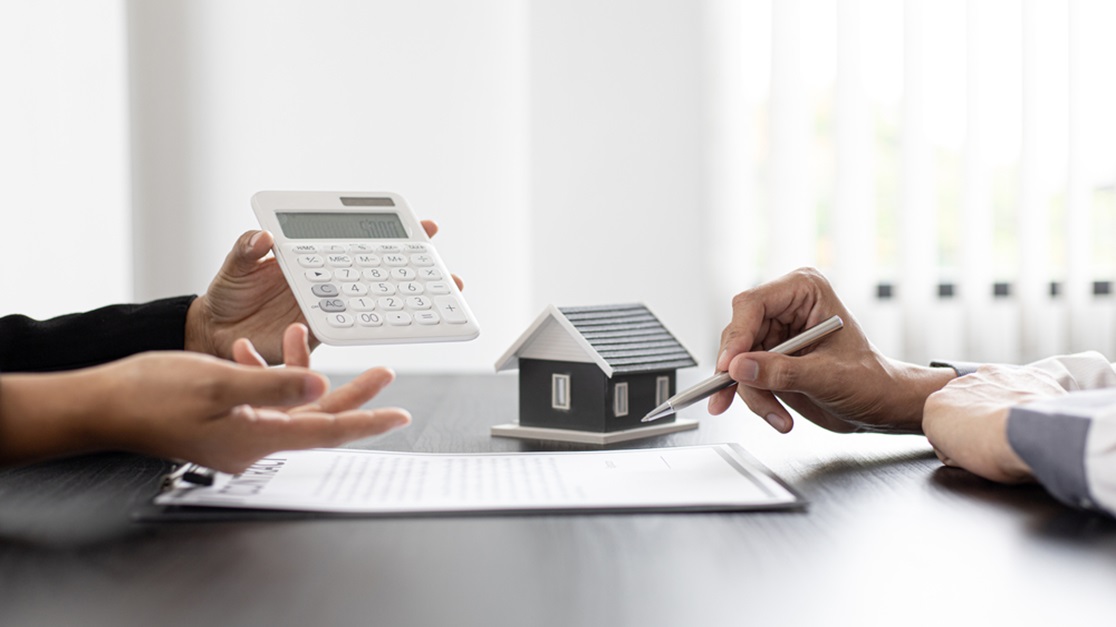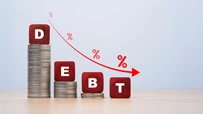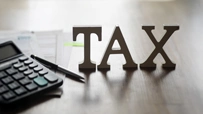A Comprehensive Guide on Mortgage Deed and Its Importance
September 03, 2025

The demand for home loans in India has surged by over 15% in 2024, largely driven by low-interest rates and the growing middle-class population. With over 60% of borrowers relying on mortgage-backed loans for housing, understanding the key elements of a mortgage deed is crucial for both borrowers and lenders in today’s competitive BFSI sector. The mortgage deed is the cornerstone of these transactions, ensuring transparency, security, and the smooth functioning of real estate and property financing.
In the dynamic financial landscape of 2024, where the demand for both residential and commercial real estate is rising, the mortgage deed serves as the legal safeguard, solidifying the lender’s interests while allowing borrowers access to crucial funding. Let’s delve deeper into the different types of mortgage deeds, their key elements, and the vital role they play in securing loans.
What is a Mortgage Deed?
A mortgage deed is a legal document that signifies the transfer of an interest in a property to secure a loan. The borrower pledges the property to the lender as collateral until the loan is repaid. This deed serves as an agreement between the lender and borrower, outlining the terms of the mortgage. It’s one of the essential documents in property transactions and is a fundamental aspect of the Banking, Financial Services, and Insurance (BFSI) sector.
In India, the mortgage deed is typically registered under the Indian Registration Act, 1908, and is essential for the lender to have a legal claim over the property in case of default.
The mortgage process has seen a significant shift with the rise of digital lending, but the core principles of mortgage deeds remain vital for both lenders and borrowers. Let’s dive into the types, elements, and significance of a mortgage deed.
Types of Mortgage Deed
A mortgage deed can be classified into different types based on the conditions and the way property ownership is handled. Below are the common types of mortgage deeds:
1. Simple Mortgage
In a simple mortgage, the borrower pledges the property to the lender, but the possession remains with the borrower. The mortgage deed indicates that the lender can claim the property if the borrower defaults on repayment. The lender cannot sell the property without the court’s permission in case of a default.
2. Mortgage by Conditional Sale
In this type, the borrower agrees to sell the property to the lender, but the sale is conditional upon repayment of the loan. If the borrower repays the loan within the agreed time, the sale is nullified, and the borrower retains the property. If the borrower defaults, the lender keeps the property as their own.
3. Usufructuary Mortgage
A usufructuary mortgage is one where the borrower transfers the right to use and enjoy the property’s income or profits to the lender. The lender has the right to take possession of the property and collect rent or income from it, but ownership remains with the borrower. The mortgage is considered fulfilled when the loan is repaid.
4. English Mortgage
In an English mortgage, the borrower transfers the property’s ownership to the lender, subject to the condition that the ownership will be reverted to the borrower upon repayment. The lender has the legal right to sell the property in case of a default.
5. Reverse Mortgage
Reverse mortgages are typically used by senior citizens. In this type of mortgage, the borrower pledges their property to the lender and receives regular payments. The loan is repaid when the borrower dies or sells the property. Reverse mortgages are becoming increasingly popular in the BFSI sector for retirement planning.
6. Anomalous Mortgage
This is a hybrid form of mortgage that doesn’t fit strictly into any one category but has features of multiple types. An anomalous mortgage is often drawn up when both the lender and borrower agree to specific customized terms.
Key Elements of Mortgage Deed
A mortgage deed includes essential elements that must be clearly outlined to ensure both parties understand their rights and obligations. These elements define the legal relationship between the lender and the borrower, safeguarding both parties' interests.
1. Parties Involved
The mortgage deed must specify the parties involved in the agreement:
- Mortgagor: The borrower or property owner who pledges the property as collateral.
- Mortgagee: The lender or financial institution who provides the loan and receives the property as security.
2. Details of the Property
The deed must contain detailed information about the property being mortgaged. This includes:
- The address and location of the property.
- A description of the property (size, boundaries, nature).
- The title deeds and any other necessary documents that establish ownership.
3. Loan Amount
The deed specifies the loan amount provided by the lender. This includes the principal loan amount, interest rate, and the total repayment amount. It may also mention any applicable penalties for default or delayed payments.
4. Terms of Repayment
The repayment terms are one of the most crucial elements of the mortgage deed. This section includes:
- Loan Tenure: The duration of the loan repayment.
- Instalment Frequency: Monthly, quarterly, or annual instalments.
- Interest Rate: Fixed or floating rates and the method of calculation.
5. Rights of the Lender
The mortgage deed outlines the lender’s rights in case the borrower defaults on repayment. This may include the right to take possession of the property, sell it, or claim any income generated from the property.
6. Rights of the Borrower
The deed should also clarify the rights of the borrower. For example:
- Right to Redemption: The borrower’s right to repay the loan and reclaim the property.
- Right to Enjoy the Property: In most cases, the borrower retains the right to use and enjoy the property unless specified otherwise (such as in usufructuary mortgages).
7. Covenants and Conditions
Covenants are the promises made by the borrower, ensuring compliance with certain conditions throughout the mortgage period. These conditions typically include:
- Property Maintenance: The borrower is obligated to maintain the property in good condition.
- Insurance Requirements: The borrower must insure the property against damage, protecting the lender's interest.
- Payment of Taxes: The borrower must pay property taxes and other statutory dues related to the property.
- Penalties for Default: Specifies penalties or actions in case of default, including late fees, interest on overdue payments, and legal actions.
8. Default and Remedies
This section defines the actions that will be taken in the event of a borrower’s default on the loan. It typically includes:
- Foreclosure: The lender has the right to initiate foreclosure proceedings, where they can sell the property to recover the outstanding loan amount.
- Possession Rights: If the borrower defaults, the lender can take possession of the mortgaged property.
- Remedies: Additional remedies the lender can pursue, such as suing for recovery, initiating a sale, or seizing assets tied to the property.
9. Execution and Registration
To make a mortgage deed legally enforceable, it must be executed and registered according to the relevant laws:
- Stamp Paper: The deed must be executed on stamp paper of the appropriate value as per local jurisdiction. The stamp duty is an important cost involved in registering the deed.
- Registration: The deed must be registered with the relevant authority (e.g., sub-registrar’s office) under the Indian Registration Act, 1908. This makes the deed legally binding and prevents fraudulent claims on the property.
10. Possession Clause
The mortgage deed specifies when and how the lender can take possession of the mortgaged property. This usually happens when the borrower defaults on the repayment or when specific conditions are met.
11. Mortgage Termination
The deed must clarify how and when the mortgage will end. Typically, the mortgage is terminated once the borrower has repaid the loan in full. The lender will then release the mortgaged property.
12. Governing Law
The mortgage deed should specify the jurisdiction and legal framework governing the contract. In India, the laws governing mortgages include the Transfer of Property Act, 1882, and the Indian Registration Act, 1908.
Why is a Mortgage Deed Important?
Mortgage deeds serve several essential functions in the BFSI sector, particularly in property financing. Here are a few reasons why mortgage deeds are critical:
- Legal Protection: The mortgage deed legally protects both the borrower and the lender. It ensures that both parties are clear on their rights and obligations.
- Property Security: It offers the lender security on the loan, allowing them to take possession of the property if the borrower defaults.
- Clarity in Transactions: The mortgage deed clearly outlines the terms and conditions of the loan, eliminating ambiguity.
- Dispute Resolution: In case of a dispute, the mortgage deed can be referred to as a legal document to settle disagreements.
Final Thoughts
The mortgage deed is a fundamental component in property-related financial transactions, offering security to both the lender and the borrower. Understanding the different types of mortgage deeds and their elements is essential for anyone involved in property financing, whether they are borrowers seeking loans or lenders offering financial products. In the BFSI sector, these documents play a crucial role in maintaining transparency, legal compliance, and safeguarding the interests of both parties.
Mortgage deeds are not just pieces of paper—they are legally binding documents that can have significant implications in property dealings. As the BFSI sector continues to grow and evolve, understanding these documents will become even more crucial for ensuring smooth and secure property transactions.
Buying a house has never been this easy! Avail Ujjivan SFB’s wide range of affordable home loan products and enjoy a hassle-free loan journey. From house purchase loan to plot loans and home improvement loans, we have it all! Alternatively, you can browse through Ujjivan SFB product suite - our wide range of financial products are designed to make your financial life better.
Disclaimer:
The contents herein are only for informational purposes and generic in nature. The content does not amount to an offer, invitation or solicitation of any kind to buy or sell, and are not intended to create any legal rights or obligations. This information is subject to updation, completion, amendment and verification without notice. The contents herein are also subject to other product-specific terms and conditions, as well as any applicable third-party terms and conditions, for which Ujjivan Small Finance Bank assumes no responsibility or liability.
Nothing contained herein is intended to constitute financial, investment, legal, tax, or any other professional advice or opinion. Please obtain professional advice before making investment or any other decisions. Any investment decisions that may be made by the you shall be at your own sole discretion, independent analysis and evaluation of the risks involved. The use of any information set out in this document is entirely at the user’s own risk. Ujjivan Small Finance Bank Limited makes no representation or warranty, express or implied, as to the accuracy and completeness for any information herein. The Bank disclaims any and all liability for any loss or damage (direct, indirect, consequential, or otherwise) incurred by you due to use of or due to investment, product application decisions made by you on the basis of the contents herein. While the information is prepared in good faith from sources deemed reliable (including public sources), the Bank disclaims any liability with respect to accuracy of information or any error or omission or any loss or damage incurred by anyone in reliance on the contents herein, in any manner whatsoever.
To know more about Ujjivan Small Finance Bank Products Visit:"https://www.ujjivansfb.in"
All intellectual property rights, including copyrights, trademarks, and other proprietary rights, pertaining to the content and materials displayed herein, belong
to Ujjivan Small Finance Bank Limited or its licensors. Unauthorised use or misuse of any intellectual property, or other content displayed herein is strictly prohibited and the same is not intended for distribution to, or use by, any person in any jurisdiction where such distribution or use would (by reason of that person’s nationality, residence or otherwise) be contrary to law or registration or would subject Ujjivan Small Finance Bank Limited or its affiliates to any licensing or registration requirements.
FAQs
1. What is the main purpose of a mortgage deed?
A mortgage deed’s primary purpose is to secure a loan by transferring interest in a property to the lender until the borrower repays the loan.
2. How does a mortgage deed work?
The borrower pledges their property as security for a loan. If the borrower fails to repay, the lender can claim possession of the property.
3. What are the types of mortgage deeds?
The common types include simple mortgage, conditional sale mortgage, usufructuary mortgage, English mortgage, reverse mortgage, and anomalous mortgage.
4. What is the difference between a mortgage deed and a sale deed?
A mortgage deed is used to pledge property as collateral for a loan, while a sale deed transfers property ownership permanently.
5. Is a mortgage deed necessary for all home loans?
Yes, a mortgage deed is essential for securing the loan against property. It protects the lender’s interest in case of default.
6. What happens if the borrower defaults on the mortgage?
In case of default, the lender has the legal right to take possession of the mortgaged property and sell it to recover the loan amount.
7. Can a mortgage deed be modified?
Yes, mortgage deeds can be modified with the agreement of both parties, typically through a supplementary agreement or addendum.
8. What are the rights of the mortgagor?
The mortgagor (borrower) retains the right to enjoy the property unless stated otherwise in the mortgage agreement.
9. How long does it take to register a mortgage deed?
Registration typically takes a few days, but it depends on local regulations and the efficiency of the authorities.
10. Can a mortgage deed be executed online?
Yes, digital mortgage deeds are gaining traction, particularly in the context of e-signatures and online property registration in many regions.
Latest Blogs

Gold Loan LTV Ratio Explained (75% to 85%): What It Means for Borrowers
March 20, 2025
In June 2025, the Reserve Bank of India (RBI) introduced a significant relaxation for gold loan borrowers: the maximum Loan-to-Value (LTV) ratio for loans below ₹2.5 lakh was raised to 85%, up from the long-standing cap of 75%. Loans between ₹2.5 lakh and ₹5 lakh can now go up to 80%, while loans above ₹5 lakh continue under the 75% ceiling.

Good Debt vs Bad Debt: Learn the Difference
August 13, 2025
Every month, millions of Indians wait for the familiar debit alert, an EMI deducted from their account.

Got a Tax Refund? 5 Smart Ways to Put Your 2025 Refund to Work
August 13, 2025
For many taxpayers, there’s a unique sense of relief when a tax refund arrives.

Credit Score Not Improving? 5 Mistakes You Might Be Making
August 13, 2025
For most of us, a credit score feels like a silent judge sitting in the background of our financial lives.

Banking Jargon Decoded: 15 Key Terms You Should Know
May 13, 2025
Banking feels simple on the surface; deposit money, withdraw when needed, pay bills, or transfer funds.




